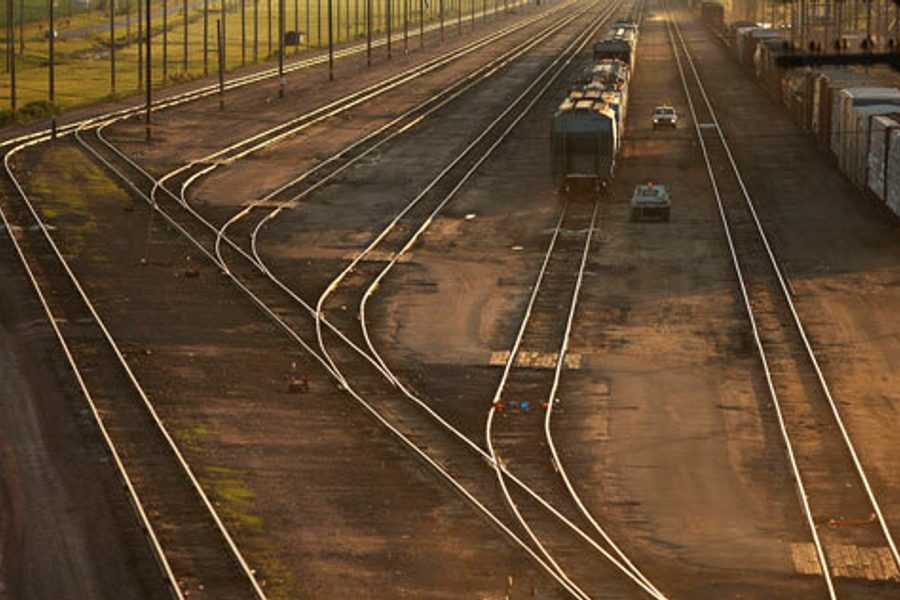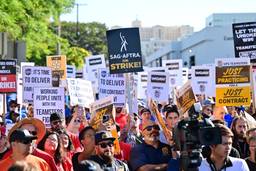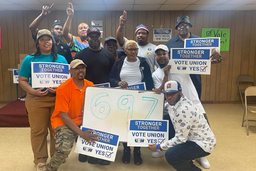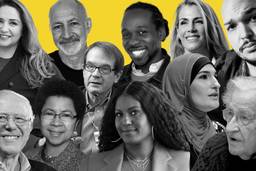
House Speaker Nancy Pelosi, Energy Secretary Steven Chu and other leaders touted a future built on “Good Jobs, Green Jobs” during the national conference convened by the Blue Green Alliance of labor and environmental groups this week. And a big chunk of those jobs, according to a report released by the alliance and the Economic Policy Institute Tuesday, will come from the expansion of the country’s freight rail network.
The “green” label is being applied to both new and existing jobs, with a wide range of sometimes questionable criteria used to define green-ness. In March, the Bureau of Labor Statistics submitted to the Federal Register a list of industries that should be considered “green,” including line haul railroads.
Rail is considered green since it is the most energy-efficient mode of long-distance transport of containers and bulk cargo, like grain and ore. Railroads are also the most common transport mode for wind turbine components — a fact frequently highlighted to bolster their green image.
The Alliane/EPI report estimated that 7,800 green jobs would be created by each billion dollars invested in expanding freight rail – including direct jobs for locomotive conductors, switchmen, brakemen and the like; and indirect jobs in construction, parts manufacturing, iron and steel production and other components. The estimate didn’t appear to include jobs in other related sectors of the goods movement industry, like warehouses and short haul trucking.
The report describes rail expansion as both driven by and a driver of a reinvigorated manufacturing base:
In March 2010, President Barack Obama announced a goal of reversing the decline of goods-producing industries and doubling the value of American exports by 2015. Such an undertaking, which could create 2 million new American jobs, would also ideally prompt expansion of the freight rail system to move more goods, with the added benefit of creating jobs in the manufacture of the rolling stock and machinery requisite to grow the American rail network.
The freight rail industry currently contributes a quarter trillion dollars a year annually to the economy and directly or indirectly employs 1.2 million people. Railroad jobs are disproportionately unionized and higher-paying than economy-wide averages, with railroad workers making an average $54,760 a year, compared to $42,270 for “all occupations,” according to the report.
And railroad jobs are disproportionately accessible to people without a college degree, a leg-up to many hit hard by the drop in manufacturing jobs in recent years. But new freight rail jobs would be filled disproportionately by white men, according to a demographic analysis by the Economic Policy Institute, with the south gaining most jobs followed by the Midwest.
The report only briefly mentions the significant air quality impacts of rail yards on surrounding communities, a problem which is being addressed by new EPA requirements and technological innovations – but not seriously and quickly enough, according to many public health and environmental justice advocates.
The Blue Green Alliance recommends tax breaks, public-private partnerships and other measures to expand and subsidize freight rail expansion. This seems to make economic and environmental sense and also gives the government more leverage to build in incentives or requirements to make sure to protect the relatively high-paid, highly unionized nature of the industry while also addressing its weak points – namely the environmental impacts of rail yards and the exploitive labor conditions in related industries like warehousing.
Kari Lydersen is a Chicago-based journalist, author and assistant professor at Northwestern University, where she leads the investigative specialization at the Medill School of Journalism, Media, Integrated Marketing Communications. Her books include Mayor 1%: Rahm Emanuel and the Rise of Chicago’s 99%.








